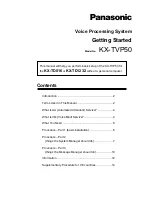
P a g e
|
3
ENERGIZER
BATTERY
MANUFACTURING
VERSION
1.2
Section
1:
Battery
Overview
For
over
35
years,
Energizer
has
manufactured
miniature
Zinc
Air
batteries
primarily
designed
to
provide
power
to
miniature
hearing
aids.
Zinc
Air
chemistry
provides
the
highest
available
energy
density
compared
to
other
commercially
available
batteries.
Energizer
Zinc
Air
Prismatic
batteries
employ
technology
similar
to
what
is
used
in
hearing
aid
batteries,
but
with
a
thin
prismatic
form
factor
providing
power
for
a
broad
range
of
applications.
1.1
‐‐
Zinc
Air
Chemistry
Zinc
Air
batteries
are
based
on
the
alkaline
chemistry
(Zn/MnO
2
)
used
in
standard
AA
and
AAA
primary
batteries.
The
high
energy
density
of
Zinc
Air
results
from
replacing
the
manganese
dioxide
(MnO
2
)
cathode
with
a
thin
air
electrode.
This
air
electrode
contains
carbon
which
catalyzes
oxygen
to
allow
it
to
react
with
zinc.
The
thin
air
electrode
eliminates
the
need
to
contain
both
reactants
in
the
battery,
so
the
majority
of
the
battery
can
be
filled
by
the
zinc
anode.
As
a
result
Zinc
Air
provides
the
highest
available
energy
density
compared
to
commercially
available
batteries.
The
typical
open
circuit
voltage
(OCV)
of
Zinc
Air
is
1.4
V.
Under
load,
the
operating
voltage
is
generally
between
1.10
and
1.30
volts.
The
half
cell
and
overall
reactions
for
a
Zinc
Air
battery
are
as
follows:
Anode:
2Zn
+
4OH
‐
→
2ZnO
+
2H
2
O
+
4e
‐
Cathode:
O
2
+
2H
2
O
+
4e
‐
→
4OH
‐
Overall:
2Zn
+
O
2
→
2ZnO
1.2
‐‐
Construction
Air
holes
are
designed
into
the
battery
container
to
allow
oxygen
to
flow
into
the
battery.
Because
exposure
to
the
environment
can
degrade
battery
performance
over
time,
the
air
holes
are
sealed
by
a
tab
prior
to
consumer
use.
The
tab
must
be
removed
before
the
battery
is
placed
into
a
device.
Once
air
enters
the
holes,
it
flows
through
an
air
distribution
layer.
This
layer
helps
to
distribute
air
across
the
entire
air
electrode.
Figure
1
shows
a
cross
section
of
an
Energizer
Zinc
Air
prismatic
battery.



































